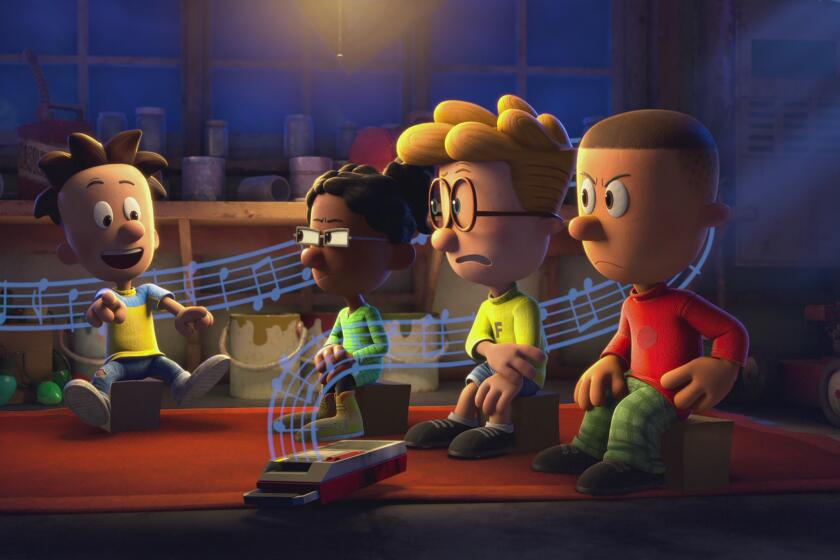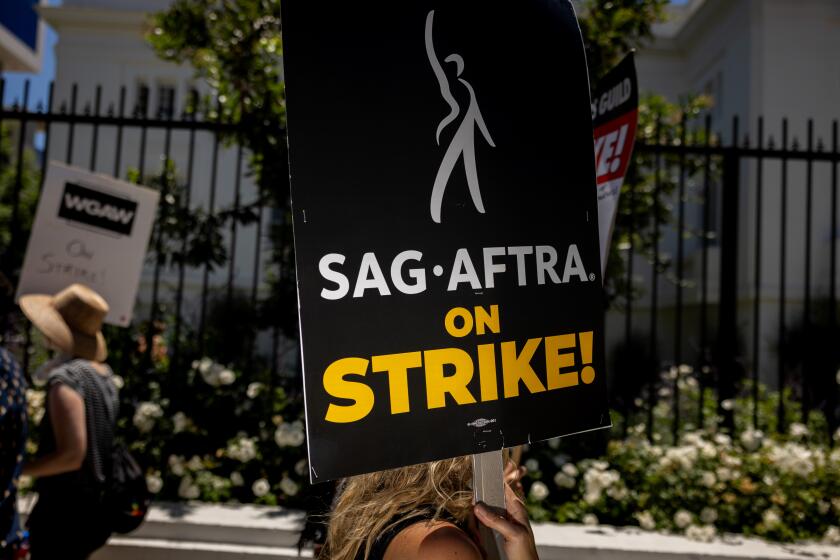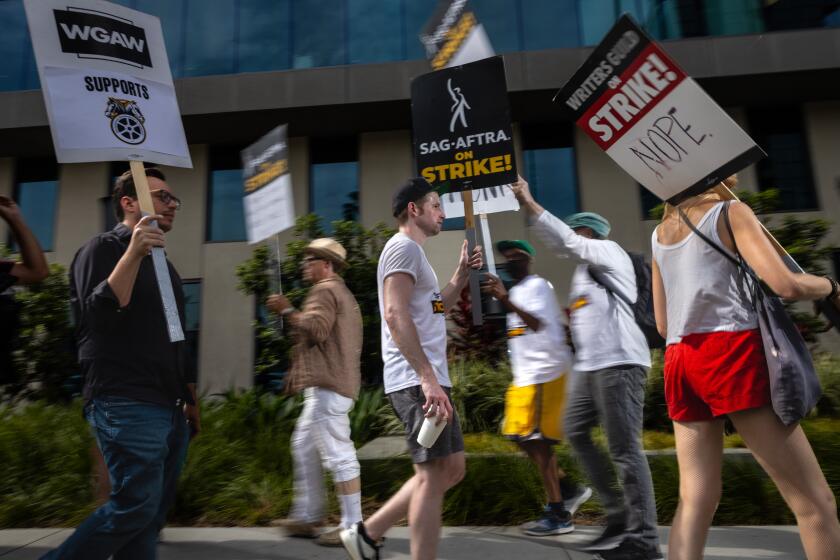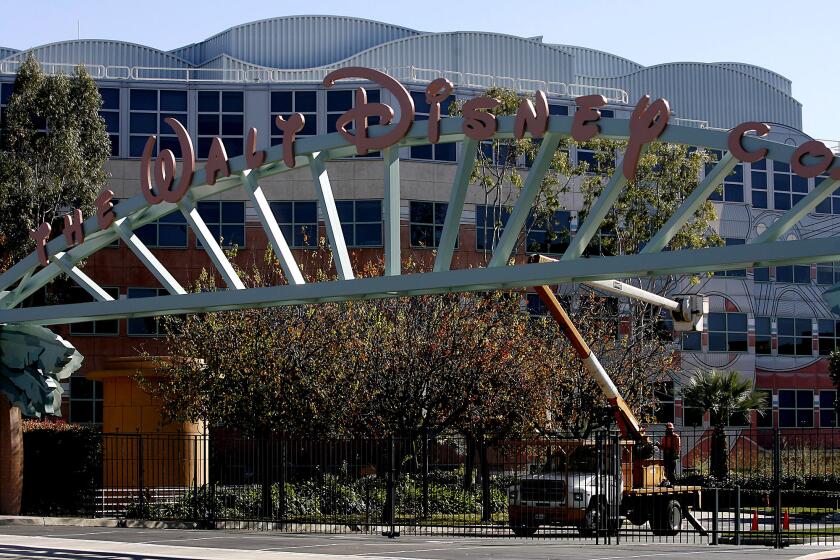Hollywood’s animation workers are unionizing at a rapid pace. Here’s why
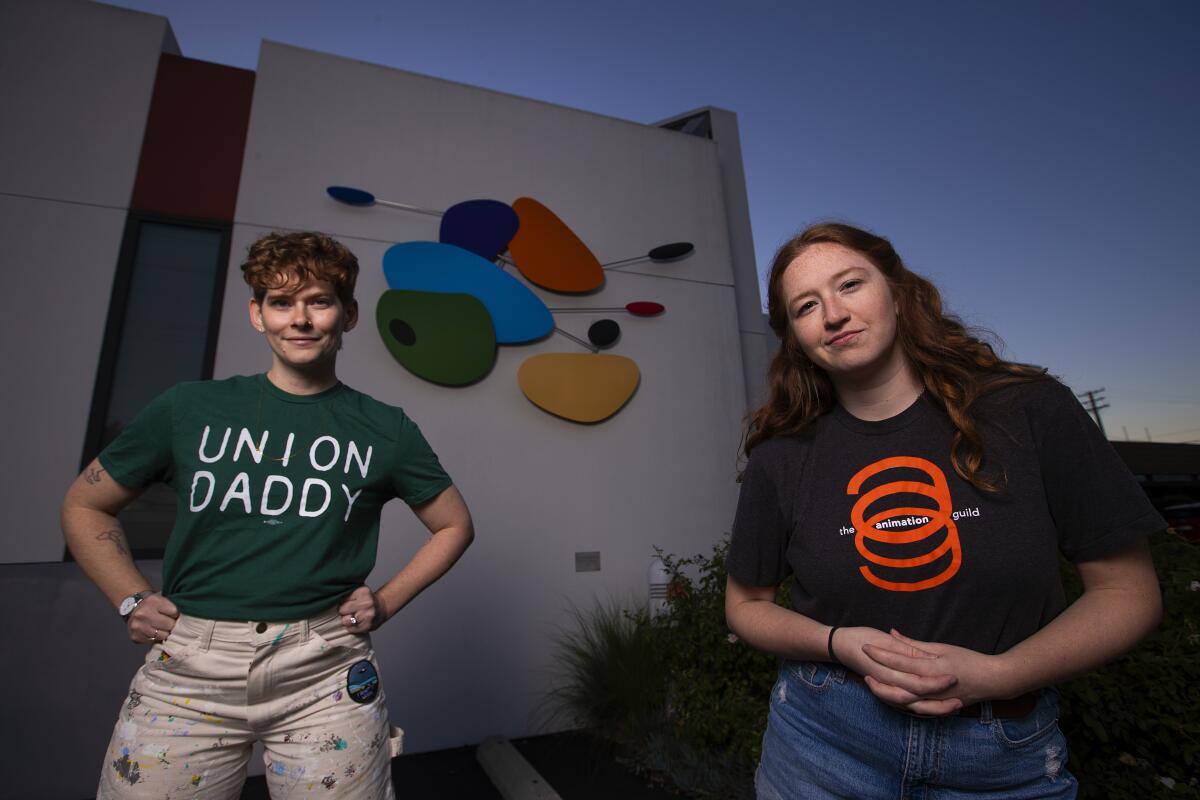
- Share via
Em Hagen stood before a window on the fifth floor of their Burbank office and waved at what they hoped was the right silver Toyota Prius zipping down Bob Hope Drive in October.
Hagen, 27, was trying to catch a glimpse of their actor-parents returning from a long day on the picket lines during the widely publicized SAG-AFTRA strike. Privately, the Cartoon Network production coordinator was following in their family’s footsteps by organizing a Hollywood labor movement of their own.
After Cartoon Network’s parent company, Warner Bros., merged with Discovery in 2022 — resulting in a sweeping creative overhaul, mass layoffs and other painful cost-cutting measures — Hagen said they and their peers became concerned about their futures at the entertainment behemoth.
Hagen and their co-workers at Cartoon Network and Warner Bros. Animation waged a four-month campaign to unionize under the Animation Guild — a move that has become increasingly popular among production workers at animation studios in recent years.
“[A] lot of the work we do often feels invisible and ... we feel replaceable,” Hagen told The Times. “Even though what we do is highly skilled and necessary for anything to get off the ground.”
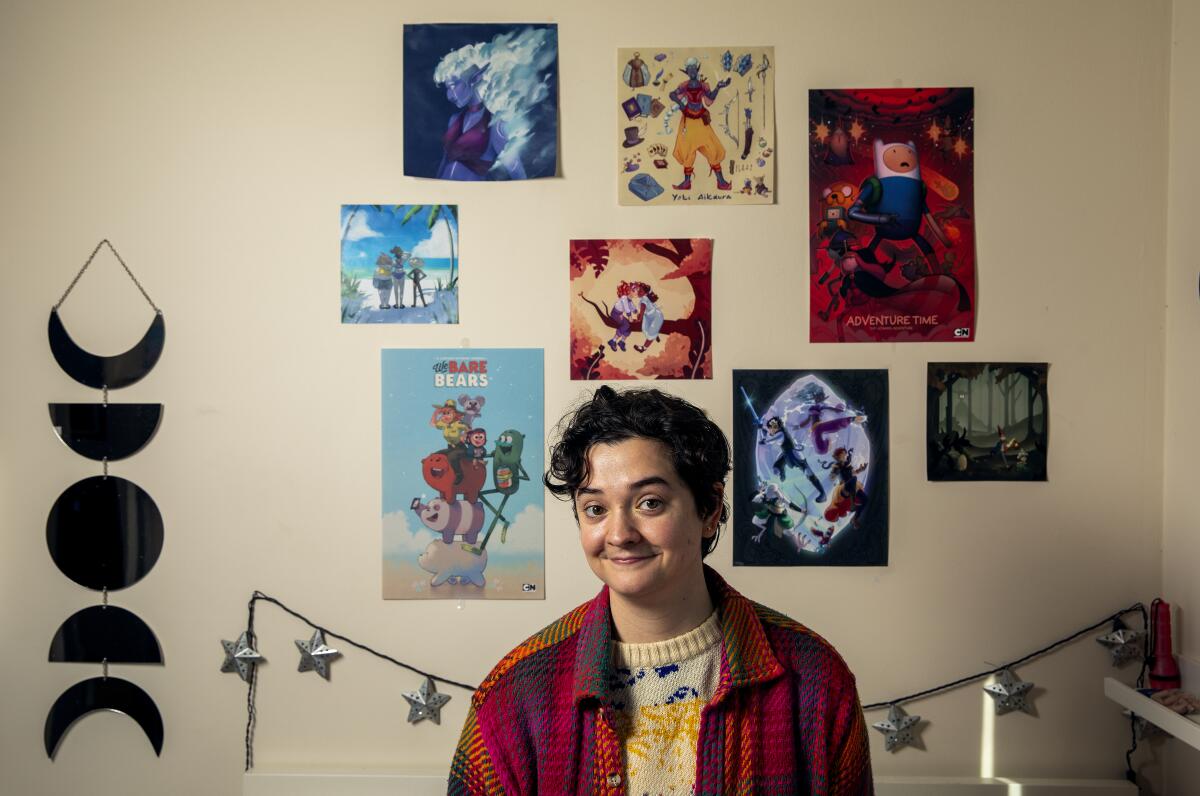
Production workers at Walt Disney Animation Studios have voted to unionize under IATSE Local 839, the Animation Guild announced Wednesday.
Since December 2021, nearly 1,000 animation professionals employed by about a dozen different studios have been cleared to unionize under the International Alliance of Theatrical Stage Employees Local 839, the official local known as the Animation Guild — a large figure considering the union has amassed about 6,000 members total since its founding in 1952, and had long grown slowly despite efforts to expand.
At least 668 of those new or soon-to-be new members fall under the job classification of production worker, which includes production coordinators, assistants, supervisors and managers. They are the liaisons and planners who ensure each stage of the production process runs smoothly from start to finish by facilitating communication between the studio and the artists, scheduling meetings, providing their co-workers with the materials they need to do their jobs and keeping everyone on track.
The Animation Guild, or TAG, has worked on behalf of animators, storyboard artists, writers, character designers and other creatives at studios ranging from Disney and Warner Bros. to Dreamworks and Nickelodeon for decades. But as recently as two years ago, the animators’ local didn’t represent any production workers. Thanks to key wins at Titmouse, Nickelodeon, Disney, Warner Bros. and other animation giants, that’s started to change.
A majority of the 177 production workers at Nickelodeon vote to join the Animation Guild in a bid for higher pay and affordable healthcare benefits.
Driven by a desire to reap the same pay minimums, benefits and job protections as their artist, writer and technician counterparts, production workers now make up the guild’s fastest-growing segment.
“[T]he moment felt right,” said Maggie Hughes, a production coordinator at Disney Animation. “Everyone felt much more comfortable and protected being able to speak up and act on things that they’ve felt for years but never felt confident” enough to express.
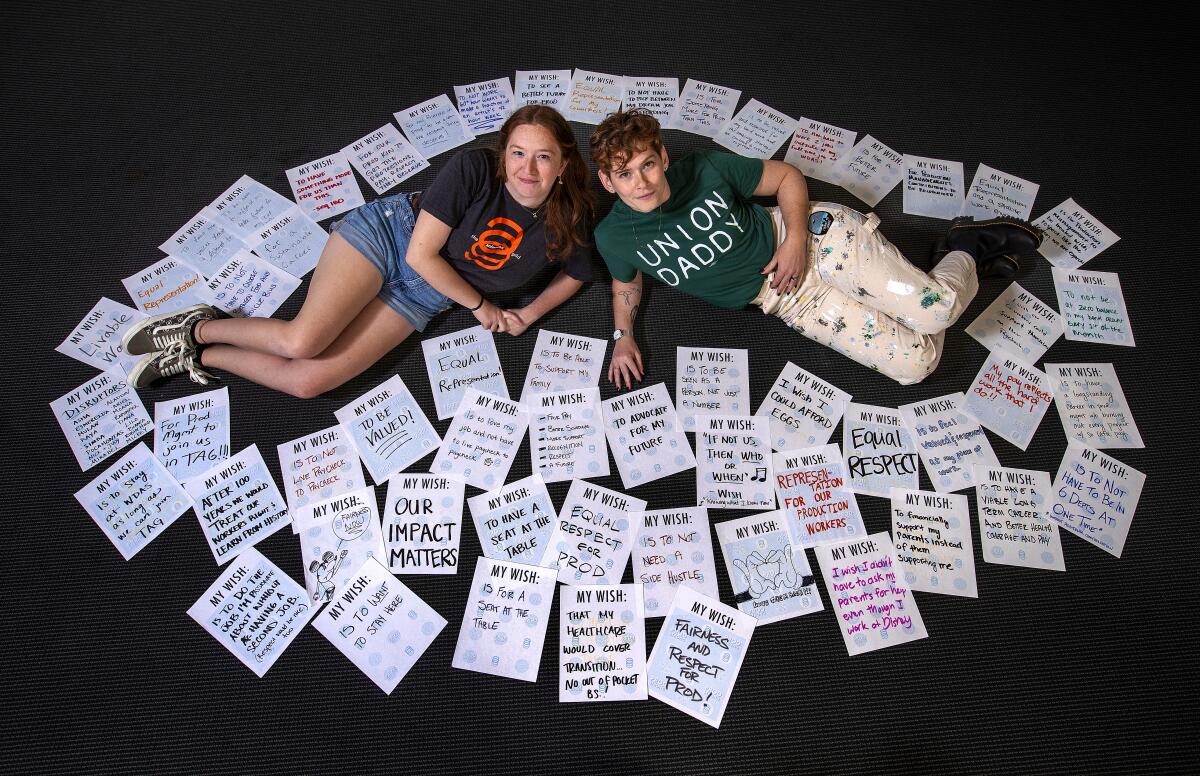
A majority of the 177 production workers at Nickelodeon vote to join the Animation Guild in a bid for higher pay and affordable healthcare benefits.
Tom Sito — a USC animation professor and former Local 839 president from 1992 to 2001 — attributed the general spike in union membership to industrial and cultural shifts.
In the Animation Guild’s early days, there was a strong stigma against labor organizing in the United States, in part because of the movement’s ties to the Mafia, said the veteran writer, animator and storyboard artist, whose credits include “The Lion King” and “The Little Mermaid.”
“When we looked at labor leaders, we saw people like Jimmy Hoffa and all these organized-crime thugs,” Sito said. “So a lot of people of my generation had this antipathy toward why they should support a union or belong in a union.”
Over time, that attitude shifted — particularly during the 2-D animation renaissance of the late 1980s and early 1990s when the guild made a more concerted effort to organize and connect with rank-and-file, “regular people,” Sito said.
SAG-AFTRA has approved a deal from the studios to end its historic strike. The actors were on strike for more than 100 days.
Even as other animators began to unionize, however, companies sought to isolate production workers from their creative colleagues and tried to convince them that they didn’t need guild representation because, someday, they would be the producers and executives running the show, Sito said.
For a lucky few, that dream came to pass. For most, it was an unfilled promise.
Now, production workers are demanding more.
“They have to choose between putting gas in the tank or buying dinner that night,” said guild organizer Allison Smartt. “They have to forgo having the ability to start a family because the healthcare is inadequate; they have to continue renting with roommates long into a time in their life when they no longer want to ... because rent in Los Angeles is incredibly high.”
Smartt added that animation workers have also been inspired by striking writers and actors — as well as nonentertainment employees at Amazon, Starbucks, UPS and other major corporations — that have come together and fought for better working conditions and compensation in recent years.

The Hollywood animation house, which recently signed a deal with Netflix, needs the space to hire up 250 more workers.
In January 2022, Titmouse New York studios — the company behind “Big Mouth,” “Kirby Buckets” and dozens of other animated series — became the first animation studio outside of Southern California, and the first production staff, to unionize under the Animation Guild .
In another major stride, 177 production workers at Nickelodeon voted to join the union in December 2022.
“Those were the two biggest milestones,” said Hughes, who voted to join the guild in November along with more than 60 other production employees at Disney Animation.
The union victory at Disney was especially hard fought. Unlike Titmouse and Nickelodeon, Disney declined to voluntarily recognize the bargaining unit formed by its production workers, according to organizers. Instead, the studio requested a hearing with the National Labor Relations Board, claiming that production supervisors and managers were managerial employees and therefore ineligible to unionize.
Disney declined to comment for this article.
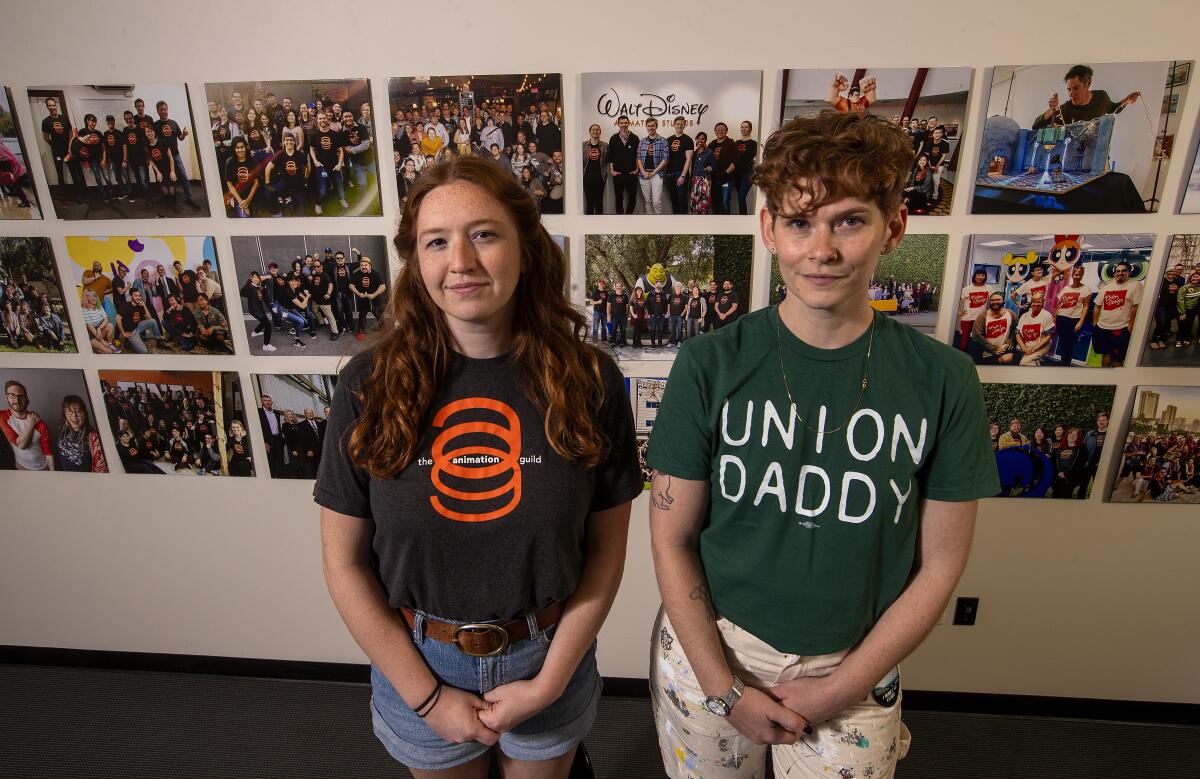
Los Angeles is sitting at the vanguard of two trends: increasingly expensive housing and an increasing amount of cross-union solidarity.
The NLRB sided in September with the Disney workers, who later voted in a certified election to join the union. Hughes cried when she learned the results of the NLRB hearing, the day after she returned from her honeymoon.
“I was just trying to catch up back at work, and then we got the news,” Hughes said. “It just felt so validating.”
Steve Kaplan, a business representative for TAG, credited the union triumph at Disney with helping inform Warner Bros. Discovery’s move to voluntarily recognize a bargaining unit of 50 production workers at Warner Bros. Animation and Cartoon Network in November. A person close to Warner Bros. Discovery, who was not authorized to comment, denied that the NLRB ruling against Disney influenced the company’s decision, which the source said was prolonged only by internal discussions and standard procedural matters.
Walt Disney Pictures visual effects workers voted to unionize under IATSE, which the union’s international president said ‘represents a seismic shift in this critical moment in our industry.’
Production workers aren’t alone in their unionization efforts. Another priority for the Animation Guild is expanding its coverage to remote workers and others based outside of Los Angeles.
Previously, only those working in L.A. County could be represented by the IATSE local, which led to a number of workers losing their union protections when they relocated during the COVID-19 pandemic.
Ty Carter, a production designer at Disney Animation, is one of 10 remote workers in the company’s so-called Traveling Lab that filed in November to unionize under TAG. After moving to Salt Lake City in 2020, Carter has desired the pay minimums, pension and healthcare benefits enjoyed by his unionized co-workers in Los Angeles.
Disney on Nov. 20 declined to voluntarily recognize the bargaining unit formed by its remote workers, who must now vote on whether to unionize in an election certified by the NLRB. Ballots are expected to be mailed out by Dec. 20.
“I’m doing the same work that I’ve always done — the same quality, the same output,” said Carter, who operates out of his “own little studio setup” at home in Utah. “It’s important that employees have that flexibility. ... A happy employee means you’re gonna get better products.”

Crew members are expressing frustration at the length of the writers’ and actors’ strikes as Hollywood workers struggle to pay for rent, food and healthcare.
With production workers at about 10 different animation studios and staffers in Texas, Virginia, New York and Puerto Rico already on the path to unionization, guild leaders say they are committed to further diversifying the job classifications and locations in their ranks.
“Our goal is to organize the rest of the production workers in L.A. County,” said TAG organizer Ben Speight. “So we’re not done yet.”
More to Read
Inside the business of entertainment
The Wide Shot brings you news, analysis and insights on everything from streaming wars to production — and what it all means for the future.
You may occasionally receive promotional content from the Los Angeles Times.

